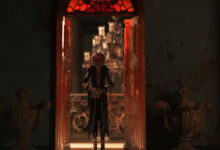Animation And Everyday Life Book

“Animation and everyday life; From the Perspective of Cultural Studies »is a research work written by Mohammad Ali Safoura, a member of the faculty of Tarbiat Modares University, which deals with television animation in Iran.
According to Artmag, today is more than half a century since the production of the first Iranian animation (Mollansereddin: Esfandiar Ahmadieh, 1987). Regardless of the answer to the question of whether animation in Iran today has reached a progress commensurate with its 60-year history or not, we know that the field of discussion of this media in scientific and academic circles has passed the preliminary and technical stage and has reached theoretical discussions and even interdisciplinary studies and fields related to the humanities. This change, in addition to raising more diverse research topics in the field of animation, requires researchers in this field to become familiar with other sciences such as sociology, psychology, philosophy, and even new disciplines such as cultural studies.
We know that with the mediation of culture in the second half of the twentieth century and the dominance of the media over contemporary culture, the function of these color media and their impact on the culture and life of people in a society and the impact of societies on the content of these media became a research topic.
During this period, “Cultural Studies” as one of the most important theoretical approaches in the late seventies gradually entered the analysis of media and artistic works and became one of the important axes of studies, especially its academic type. One of the most important aspects of cultural studies is the study of content that can be achieved by reading artistic texts; Themes of daily life and lifestyle of different nationalities, ethnicities and cultures that point to the differences and commonalities of human culture around the world and lead to constructive dialogue.
How spending our leisure time, worshiping, dressing, eating, sleeping, adorning ourselves, consuming, speaking, performing national and religious ceremonies, and all our daily practices and those of other societies can be distinguished from another culture. Focusing on these topics has somehow transformed cultural studies into the study of “Everyday Life and Lifestyle.” One of the serious researches with the approach of cultural studies of the effect of animation and daily life; It is published by Mohammad Ali Safoura, a faculty member of Tarbiat Modares University.
In the research that results from the present book, this university professor has chosen the type of television from among the types of animations. This type of animation is both broader than other types and because its main audience is the child and the family, it is considered a kind of media for education. Safoura in the preface of this work about the status and quantitative status of this type of animation in Iran, states the reason for the importance of this research as follows: Today, Iranian television animation has access to all kinds of software, hardware and production tools. The provision of technical facilities, spending a lot of money and expenses over the past two decades, the small production of many works, the lack of effective communication between the audience and most of these works and, most importantly, the little success in the field of culture indicate the importance of the subject.
The book is written in five chapters; In the first chapter, entitled “Perspective”, the author examines the features of television animation and examines this medium in terms of audience breadth, mass production (industrial), education and entertainment, children, adolescents and adults.
Cultural Studies, Methods of Reading and Analyzing Animation as a Social Text The title of the second chapter of this book deals with topics such as animation studies, cultural studies, cultural studies and daily life, critical theories and everyday life, the concept of representation, representation in cultural studies, Foucault’s view In representation, the concept of “other” in representation deals with the strategy of stereotyping in representation as well as the strategy of naturalization in representation.
In the third chapter, the axes of representation in daily life are discussed and the author writes in the introduction of this chapter:
In general, the most important socio-cultural contexts that can affect Iranian animation productions are:
1. The Impact of the Islamic Revolution of Iran (Revolutionary Islamic Culture)
2. The influence of ancient Iranian literature, popular culture and daily life
3. The influence of imported cultures (Western lifestyle, etc.).
These important factors and contexts can, in fact, be very effective in discussions about themes and how to represent everyday life in Iranian television animations. Therefore, in extra-textual analysis, which is one of the features of text analysis in cultural studies and is related to the socio-cultural context of the production of media texts, will pay attention to these cases. (Pp.32-33)
In this chapter, in addition to the introduction, topics such as the axes of representation in everyday life, the representation of different types of characters and groups, the representation of different places, the representation of popular culture and lifestyle, the key concepts of representation; The other is stereotyping and naturalization, representation of various themes and themes, representation of various values, and representation of various patterns.
The fourth chapter of the book, which is the most detailed part of the book and contains a sample review, is called the analysis of daily life in animation works. In this chapter, three TV animated series including Shakrestan, Great Scientists and Golnar stories from Iranian products and three English TV animated series including Charlie and Lola, The Amazing Adventures of Gambal and Pat Postchi have been analyzed and studied. For this analysis, topics such as representation of popular culture and lifestyle, key concepts of representation, representation of various themes and themes, types of values and patterns have been considered.
The book ends with a detailed and 75-page appendix entitled An Overview of the History of Iranian and British Animation, which is a good source for academic research.
Animation books and everyday life; Through the lens of cultural studies in 236 pages by Dr. Mohammad Ali Safoura has been published by the University of Arts.








